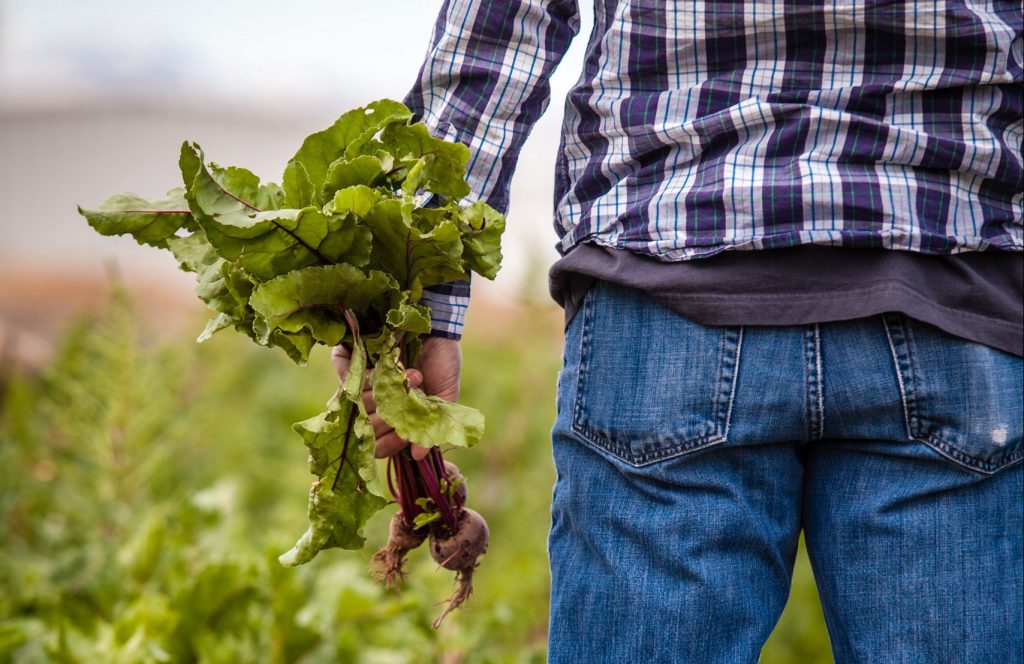In the agricultural industry, we are used to buzzwords overtaking our newsfeeds and weaseling their way into our lives even if we don’t fully understand what the concept means. One of those for you might be, “regenerative farming.” There are a multitude of other names for it, like “carbon-focused farming,” or “beyond sustainable,” and it can be a very vague title with different meanings.
From the research I have done thus far, regenerative is like the muscled-up version of sustainable agriculture. One website boasted how regenerative practices not only mean to “do no harm” to the land but reverse the damage that has been done as well.
According to Ag Funder News, this is something that is creating a lot of interest within the industry. In an article from May 2019 titled, “Regenerative Agriculture is Getting More Mainstream But How Scalable is it?” They state how General Mills promised to convert 1 million acres of farmland into regenerative practices by 2030. And, how Blue Apron’s founder created a new online grocer with poultry raised under this management type, called Cooks Venture.
Management Practices
How this is accomplished, though? Why is it such big deal?
Regenerative agriculture is a holistic approach to farming and ranching. Grazing and no-till are big players in the management practices, but mostly, this seems to be like sustainable agriculture in the sense that there are a lot of practices, with a few main goals in common.
Regenerativeagriculutredefinition.com, by Terra Genesis International, was established to open a discussion regarding this practice. They state that “Regenerative Agriculture is a system of farming principles and practices that increases biodiversity, enriches soils, improves watersheds, and enhances ecosystem services.
Regenerative Agriculture aims to capture carbon in soil and aboveground biomass, reversing current global trends of atmospheric accumulation.
At the same time, it offers increased yields, resilience to climate instability, and higher health and vitality for farming and ranching communities.
The system draws from decades of scientific and applied research by the global communities of organic farming, agroecology, Holistic Management, and agroforestry.”
Implementation on the Farm
Ag Funder News listed a few ways this practice is implemented and how it boosts soil health.
Integrating Livestock
As animals move, their hooves break up the soil, compacting inedible plants and allowing nutrients and sunlight to new plants—essentially speeding up the building of soil organic matter, with crushed leaves and stalks creating a natural mulch. This better equips the soil for germinating seeds. And the livestock’s excrement adds nutrients to the ground, further improving water retention.
Cover Crops
One of the key principles of regenerative agriculture techniques is to keep the soil covered at all times. This can be achieved through both plant residues and cover crops, which protect the soil from wind and water erosion, lower the temperature of the soil, and feed the microorganisms within it.
No-Till
One teaspoon of healthy soil has more living organisms than there are people on Earth—vitally important building structure and overall soil health. Mechanical, physical, and chemical (synthetic fertilizer, herbicide, pesticide, and fungicide) disturbances all have a negative on the soil microbiome, putting soil nutrient cycling and environmental resilience at risk. Limiting the disturbance of the soil maintains the soil structure and prevents erosion.

Crop Diversity
“‘Nature is more collaborative than competitive,’ regenerative agriculture pioneer Gabe Brown writes in Dirt to Soil: One Family’s Journey into Regenerative Agriculture. Diverse ecosystems—whether it’s through plant or animal species—mean healthier and more resilient soil.”
California Regenerative Agriculture
There are quite a few farms that have already adapted this method. This practice is actual relatively relaxed, in the sense that you’re allowing nature to take its course, so farming practices don’t have to be intense.
One farm I visited in the fall of 2019, PT Ranch in Ione, California, follows these practices without much stress. It was the first ranch I knew of that followed these practices. It all seemed very simple; they use rotational grazing with their sheep to prevent over-grazing and damage to the soil, and keep transportable chicken pens in pastures to help fertilize fields.
Other California farming operations that follow regenerative practices include Alexandre Family Farm, Diestel Family Ranch and Singing Frogs Farm.
Resources
Of course, understanding how conventional agriculture works means that you know how every farmer is working hard to be sustainable, and improve the environment. Regenerative agriculture is simply another method in which farmers and ranchers can adapt and market to consumers. Our industry is always improving and no one method is right or wrong, we must all exist collectively to provide plenty of food for the world.
Some great resources, besides the aforementioned farms and sites, include multiple Facebook groups, and other organizations such as Regeneration International and Kiss The Ground.







